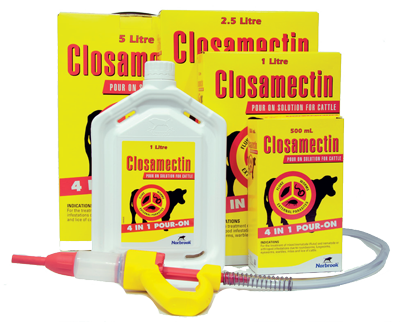Closamectin Pour On was launched by Norbrook in 2009, the first treatment for liver fluke available in a pour-on form.
Since then it has become the product of choice for many farmers in Ireland.
Closamectin Pour On is the stress-free, safe and effective way to treat cattle for fluke and worms this summer to ensure maximum productivity at grass.
Norbrook would like to get farmers’ feedback on Closamectin Pour On and are giving users a chance to tell them what they think, to be in with a chance of winning €750 in cash.
In one line the company wants users to tell them: Why you will be using Closamectin Pour On this grazing period?
Entrants to the competition will be in with a chance of winning €750 in cash and their answer may be part of the Closamectin Pour On grazing campaign for 2017. Enter the competion here
Why treat grazing cattle for liver fluke?
Spring pasture has a burden of infective liver fluke larvae that can infect cattle once they are turned out to grass.
After these infective larvae are ingested they make their way to the animal’s liver, where they cause damage as they mature into adult fluke.
Significant numbers of fluke can be present eight-to-12 weeks post turn-out, yet treatment for liver fluke is often delayed until autumn/housing.
As a result many cattle may go untreated for liver fluke for the entire summer.
Cattle at grass, with a developing fluke burden, will have reduced growth rates so treating them during the grazing season will maximise live-weight gain at grass.
Closamectin Pour On can be used in pregnant maiden dairy heifers during the first half of pregnancy.
This allows for a timely treatment mid-grazing to control fluke and worm burdens and help these valuable heifers reach their target weight at first calving.


